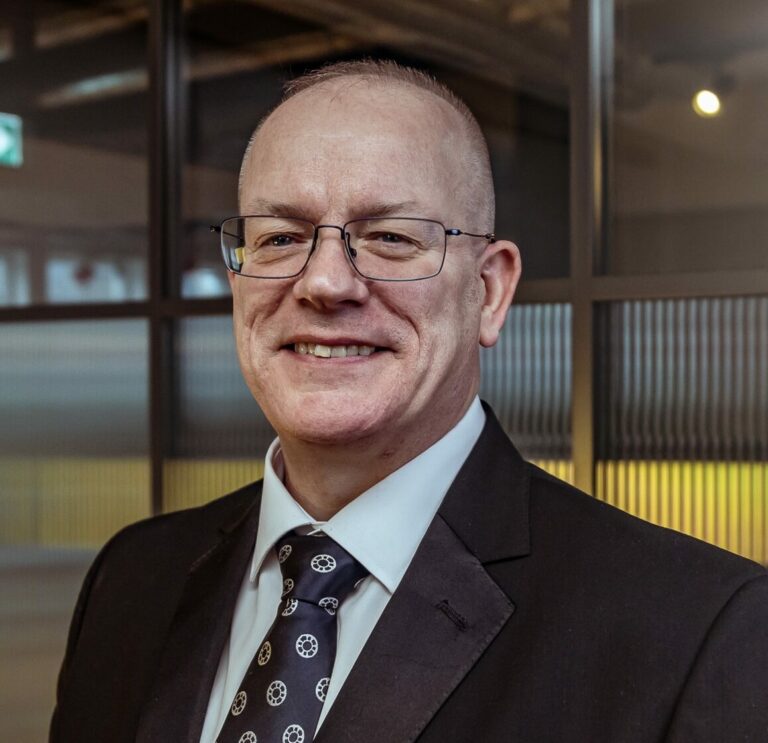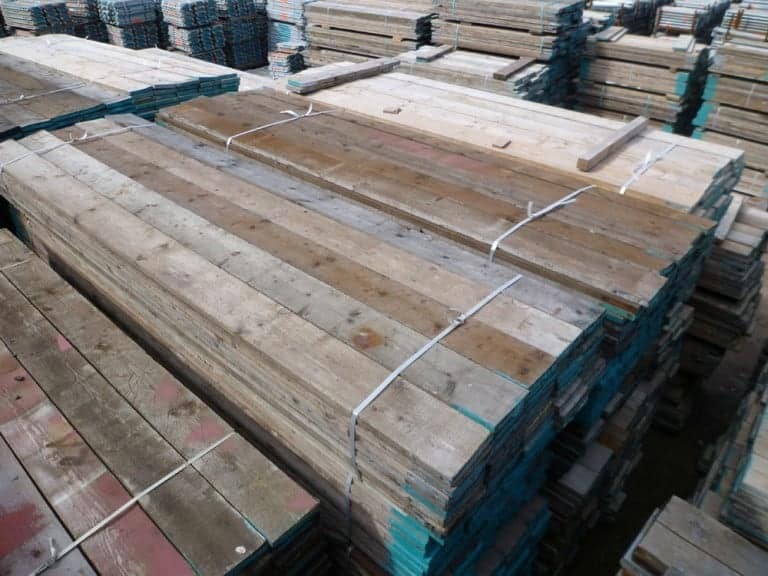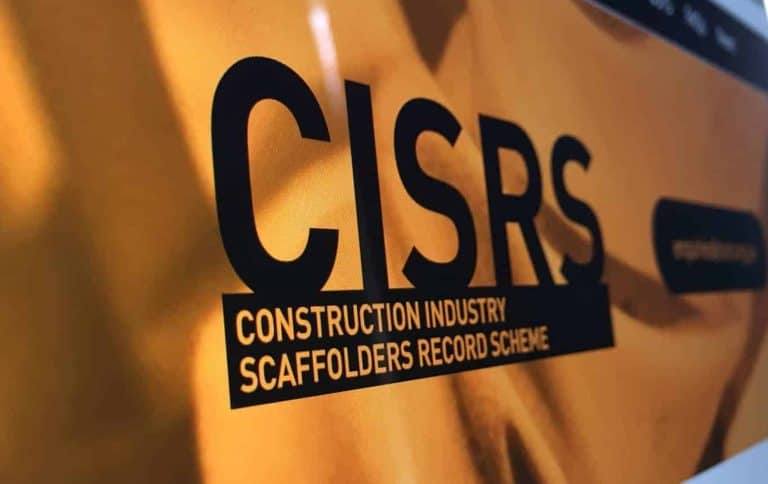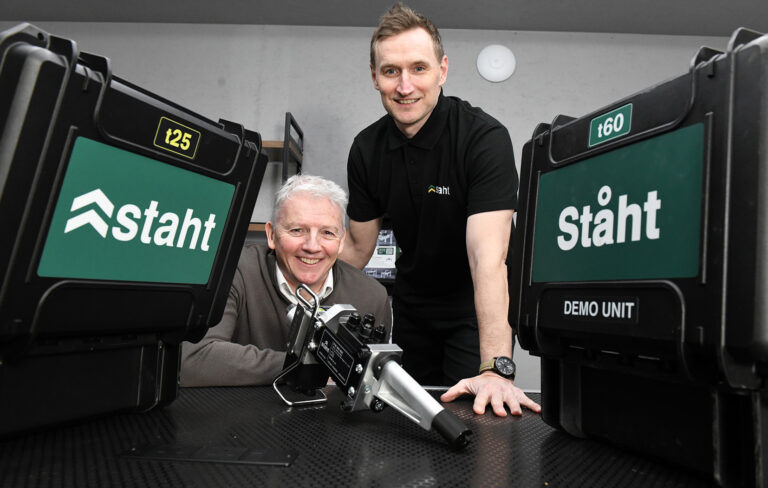Sean Pike Celebrates 26 Years with Layher UK
Bechtel Secures Role in Landmark Saudi Airport Project
New U.S. Standard for Scaffold Boards Approved by ANSI
CISRS Hits Back at Breakaway Training Alliance Criticism
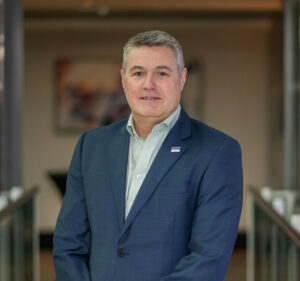
New Breakaway Scaffolding Training Body Launched Amid Industry Uncertainty
 The newly formed Scaffolding Training Alliance (STA) brings together a collective of experienced scaffolding professionals and training providers. Its creation comes at a time of uncertainty in the sector, with some training centres voicing concerns over reforms announced yesterday to the Construction Industry Scaffolders Record Scheme (CISRS), which has served as the industry standard for six decades.
The alliance said it aims to “maintain and improve upon existing scaffolding and safety standards” while ensuring scaffolding training remains consistent, accessible, and high-quality for both learners and employers.
A spokesperson for the STA, speaking to the Construction Enquirer, described the move as “a fantastic opportunity” to unite voices from across the scaffolding training sector. They said the alliance will focus on “sustainable, effective training practices, in a safe environment” that meet the evolving needs of the UK’s access industry.
While the STA said it would embrace digital tools where appropriate, it emphasised that hands-on skills will remain at the heart of its training programmes — including the safe use and erection of both traditional tube and fitting scaffolds and modern system scaffolds.
“Scaffolding is a high-risk sector,” the spokesperson added. “We need to be assured that operatives who pass through our training centres are equipped with the right knowledge and skills to carry out their work safely and competently — especially when working at height or undertaking manual handling tasks.”
The STA also expressed a desire to collaborate with a broad range of industry organisations, including the NASC, ASITO, the Scaffolding Association, HSE, Build UK, CSCS, CITB and Unite.
“We look forward to engaging with industry employer representatives and the wider construction community,” the alliance said. “Our goal is to encourage healthy debate and contribute to the continued growth and success of the scaffolding sector — something we are all deeply passionate about.”
Scaffmag has reached out to CISRS and NASC for comment.
The newly formed Scaffolding Training Alliance (STA) brings together a collective of experienced scaffolding professionals and training providers. Its creation comes at a time of uncertainty in the sector, with some training centres voicing concerns over reforms announced yesterday to the Construction Industry Scaffolders Record Scheme (CISRS), which has served as the industry standard for six decades.
The alliance said it aims to “maintain and improve upon existing scaffolding and safety standards” while ensuring scaffolding training remains consistent, accessible, and high-quality for both learners and employers.
A spokesperson for the STA, speaking to the Construction Enquirer, described the move as “a fantastic opportunity” to unite voices from across the scaffolding training sector. They said the alliance will focus on “sustainable, effective training practices, in a safe environment” that meet the evolving needs of the UK’s access industry.
While the STA said it would embrace digital tools where appropriate, it emphasised that hands-on skills will remain at the heart of its training programmes — including the safe use and erection of both traditional tube and fitting scaffolds and modern system scaffolds.
“Scaffolding is a high-risk sector,” the spokesperson added. “We need to be assured that operatives who pass through our training centres are equipped with the right knowledge and skills to carry out their work safely and competently — especially when working at height or undertaking manual handling tasks.”
The STA also expressed a desire to collaborate with a broad range of industry organisations, including the NASC, ASITO, the Scaffolding Association, HSE, Build UK, CSCS, CITB and Unite.
“We look forward to engaging with industry employer representatives and the wider construction community,” the alliance said. “Our goal is to encourage healthy debate and contribute to the continued growth and success of the scaffolding sector — something we are all deeply passionate about.”
Scaffmag has reached out to CISRS and NASC for comment. CISRS Launches Overhaul of Scaffolding Training in Landmark Reform Drive

Scaffolding Firm Supports Restoration of Iconic Jenners Building
 He added: “This is a superb project to be part of and credit goes to the Edinburgh operations team, headed up by Scott Tillbrook. We’ve already received high praise from the client and main contractor, and we hope further recognition will follow as the restoration progresses.”
The redevelopment aims to breathe new life into one of Scotland’s most beloved buildings, blending its rich history with modern use, while preserving its ornate façade and interiors for future generations.
He added: “This is a superb project to be part of and credit goes to the Edinburgh operations team, headed up by Scott Tillbrook. We’ve already received high praise from the client and main contractor, and we hope further recognition will follow as the restoration progresses.”
The redevelopment aims to breathe new life into one of Scotland’s most beloved buildings, blending its rich history with modern use, while preserving its ornate façade and interiors for future generations. Scaffold Testing Tech Maker Staht Sets £1m Goal
 The technology aims to streamline compliance checks, particularly where detailed inspection records are required for site safety documentation or third-party verification.
To meet increased demand, the company has recently expanded its operations at Hayes Lane Trading Estate in Lye, adding new warehouse and workshop space along with a training facility for clients.
Staht has also received support from Business Growth West Midlands (BGWM), a government-funded service aimed at helping small businesses scale up. Through BGWM, the firm secured capital funding for a 3D printer, allowing it to bring product prototyping in-house.
BGWM adviser Steve Dunn said Staht was an example of a small manufacturer responding to the construction sector’s evolving needs.
“Rob and the team are designing and building equipment in the Black Country that’s being used around the world. It’s a good case of innovation meeting market demand — especially in areas like scaffolding where inspection regimes are tightening.”
Staht currently employs six people and is continuing to develop new tools aimed at the access and safety market. Its most recent product, the T25, offers Bluetooth connectivity and a full-colour screen in a more compact format.
The technology aims to streamline compliance checks, particularly where detailed inspection records are required for site safety documentation or third-party verification.
To meet increased demand, the company has recently expanded its operations at Hayes Lane Trading Estate in Lye, adding new warehouse and workshop space along with a training facility for clients.
Staht has also received support from Business Growth West Midlands (BGWM), a government-funded service aimed at helping small businesses scale up. Through BGWM, the firm secured capital funding for a 3D printer, allowing it to bring product prototyping in-house.
BGWM adviser Steve Dunn said Staht was an example of a small manufacturer responding to the construction sector’s evolving needs.
“Rob and the team are designing and building equipment in the Black Country that’s being used around the world. It’s a good case of innovation meeting market demand — especially in areas like scaffolding where inspection regimes are tightening.”
Staht currently employs six people and is continuing to develop new tools aimed at the access and safety market. Its most recent product, the T25, offers Bluetooth connectivity and a full-colour screen in a more compact format. Stork Secures Major Inspection Contract with Ithaca Energy
UK Team Secures Final Spot in ScaffChamp 2025
Scaffmag can exclusively reveal that Lancashire-based AK Scaffolding Ltd has claimed the last coveted spot in ScaffChamp 2025, the international scaffolding championship set to take place next month.
The announcement marks a significant moment for the competition, as AK Scaffolding becomes the final team to join the elite global lineup competing in what is widely regarded as the world’s premier scaffold assembly showdown.
Sources close to the event organisers have confirmed that AK Scaffolding Ltd has officially accepted the invitation to represent the UK on the global stage. Their participation ensures Britain will once again have a presence in the high-pressure, time-critical event that tests speed, accuracy, and safety in scaffold erection and dismantling.
ScaffChamp, held in Vilnius, Lithuania, will feature teams from across Europe and beyond, all vying for top honours in front of an international audience. The competition is as much a celebration of craft and teamwork as it is a battle of skill and efficiency.
With the lineup now complete, anticipation for ScaffChamp 2025 has reached new heights.
More details, including team profiles and competition format, will follow soon.
